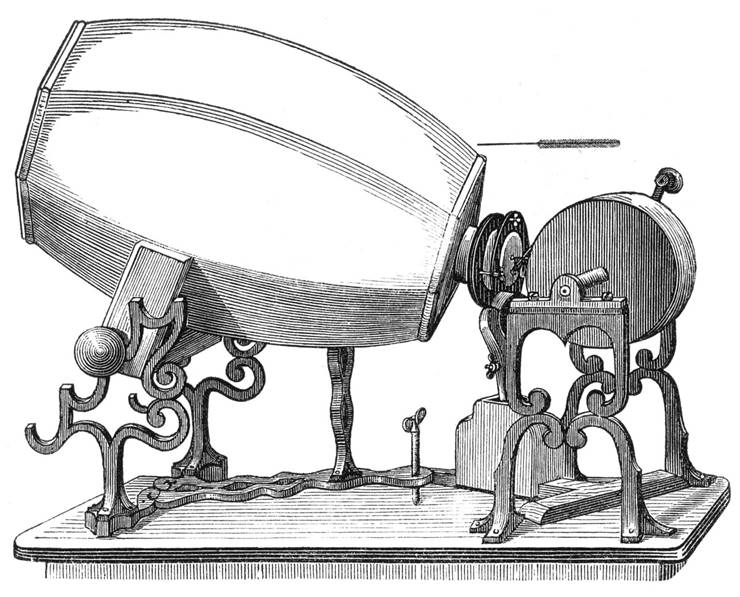History of of Phonautograph
The history of sound recording started in mid-19th century when French inventor Édouard-Léon Scott de Martinville patented the earliest known device that recorded sound from the air. This invention (patented on March 25, 1857) called Phonautograph paved the way for the future inventors who introduced to the world not only better capable sound recording devices, but also sound reproducing devices. Only few decades after Scott' sinnovation, the world was presented with the ground breaking device made by Thomas Edison that would change the way we listen to music and the landscape of music industry - Phonograph (or better known as Gramophone).
Édouard-Léon Scott de Martinville (1817 - 1879) was born and lived in Paris where he owned successful bookstore and printing workshop. Because he was fascinated with the human voice and the ways he could better transcribe it into written or other form he worked on several ways to achieve his goal. His efforts in the field of Stenography led him to the introduction of improved "shorthand", an abbreviated symbolic writing method that enables the user to record human speech faster than normal language writing methods. However his end goal was with the new technology found in photography, where recording of light enabled the capture of real life information without any loss that was introduced by human factor.

He started his work in 1854 after acquiring medical text and diagrams about human auditory anatomy, which he believed can be replicated in mechanical form. He used horn to collect the sound, elastic membrane was substituted with tympanum diaphragm, and a moveable stylus that recorded sound on a piece of moveable paper, wood or glass surface which was constantly moving. To achieve movement of recording surface, Scott used a crank that rotated the material and enabled stylus to record the oscillations of sound. With the initial prototype completed, Scott managed to create something that no one has made before - first known general sound recording device.
On January 26 1857 he delivered his designs to the French Academy, and by 25 March he was awarded a patent number #17,897/31,470 for his "phonautograph". With the help of famous German physicist and acoustic scientist Rudolph Koenig, Scott created several more of his phonautograph designs, all improving the ability to more accurately record sound. Scott's design was able only to record sound frequencies on the paper, and because of that it never reached mass appeal and financial success as Tomas Edison's gramophone. However, phonautograph managed to find its way to several scientific studies of human voice and sound waves.
Even though Scott de Martinville never made any profit from creation of phonautograph, his invention fueled the imagination of other inventors who improved his designs which soon became almost forgotten… until 2008 when New York Times reported that they discovered one phonautogram with the recordings of human voice. With the help of modern technology, scientists processed the recording and were able to recreate the sounds of traditions song that was performed by Scott himself. This song that was recorded on April 9th 1860 represents the earliest known recording of human voice in human history.
